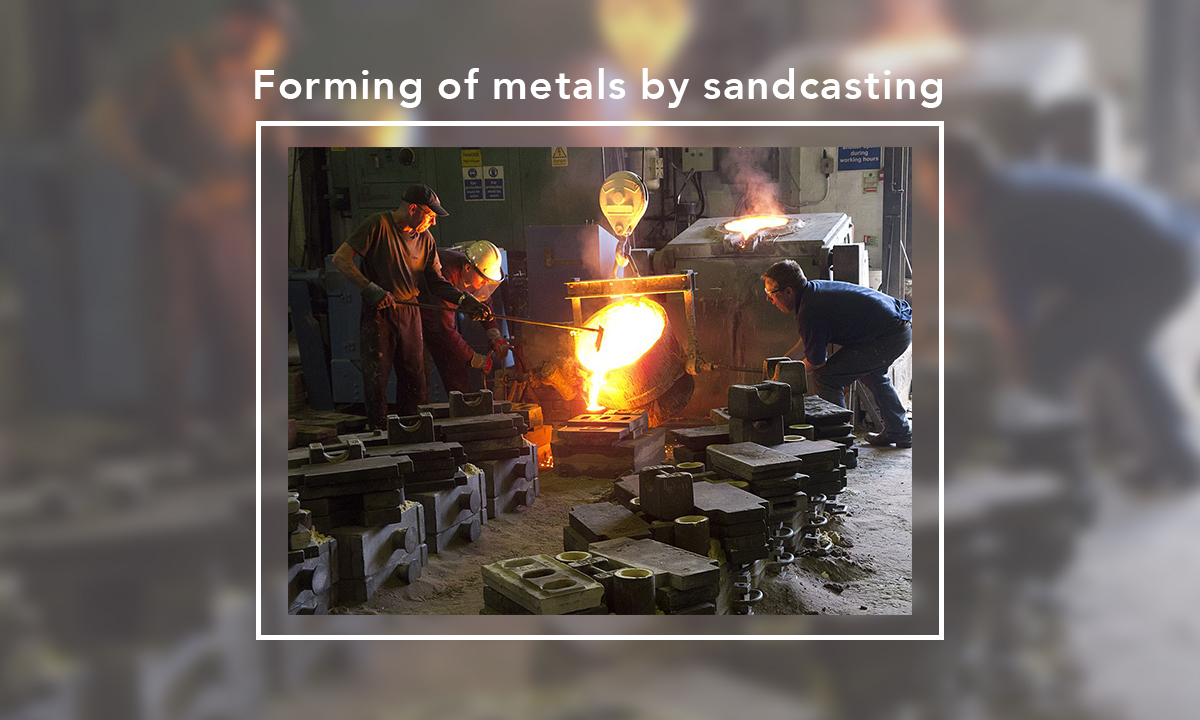Casting: is also known as foundering, is the oldest manufacturing process in which liquid molten metal is poured into a perforated casting cavity of refractory material. Allow liquid metal to solidify, after solidification the casting metal can be taken out by breaking the mold. The casting process is used to produce components such as pistons, mill rolls, wheels, cylinder blocks, liners, machine tool beds.
Sand casting: is the oldest method of casting. It is also the most versatile, has the lowest setup cost, and is the easiest and most cost-effective to modify. Because of these features, sand casting is ideally suited for making low and medium volume production castings, prototype castings and converting welded parts to castings.
terminology used in the casting process: molding sand, baking sand, facing sand, loam sand, parting sand, CO2 sand, flak, pattern, parting line, sprue, runner, ingate, riser, chill, and chaplets.
Material of products that can casting produce:
Sand casting is able to make parts of almost any alloy, but it’s especially used to cast materials with high melting temperatures, including steel, nickel, and titanium. The most common materials made by this process are:
- Aluminiumalloys
- Brass alloys
- Cast iron
- Cast steel

Basic steps for Sand Casting Process:
- Create a mold by placing a pattern in sand.
- Make a proper gating system in the mold.
- Remove the pattern from the mold.
- Pour molten metal into the mold cavity.
- Allow the metal to cool.
- Break away the sand mold and remove the casting.

Molding sands
Molding sands, also known as foundry sands, are defined by eight characteristics:
- refractoriness
- chemical inertness
- Permeability
- surface finish
- Cohesiveness
- Flowability
- Collapsibility
- availability/cost.
Advantages of Sand Casting:
In addition to Sand Castings being very versatile, having a low set up cost, and being the easiest and most cost-effective to modify, there are many other advantages as sand casting makes it possible to:
- Molten metal flows into a small ant section in the molten cavity. Hence any complex shape can be easily produced.
- Produce very large parts.
- Have a shorter lead time.
- Recycle scrap.
- Practically any material can be casted.
- Ideal method if you are producing small quantities.
- Due to small cooling rates from all directions, the properties of casting are the same in all directions.
- Any size of casting can be produced up to 200 tons.
- Casting is often cheapest and has a lower cost for tooling and most direct way of producing a shape with certain desired mechanical properties.
- Certain metals and alloys such as highly creep resistant metal-based alloys for gas turbines cannot be worked mechanically and can be cast only.
- Heavy equipment like machine leads, ship’s propeller, etc. can be thrown easily in the required size rather than fabricating them by joining several small pieces.
- Casting is best suited for composite components requiring different properties in various directions. These are made by incorporating preferable inserts in a casting. For example, aluminum conductors into slots in iron armature for electric motors, wear resistant skins onto shock resistant components.
Applications for SandCasting:
Sand casting is used for a variety of applications to produce a wide range of parts including:
- air compressor pistons
- bearings
- blowers & impellers
- bushings
- cams
- electronic equipment
- engine crankcases
- engine oil pans
- fittings
- flywheel castings
- gas and oil tanks
- gears
- hardware
- low-pressure valves
- machine parts
- mining machine parts
- oil pans
- printing press
- pump bodies
- pump pistons
- screw nuts
- trailer parts
- truck chassis parts
- valves
- water jackets & crankcases
- worm gears
Semi_sealing_machine_CUBII
You can watch this video to know more about
 cubii Semi-automatic welding machine
cubii Semi-automatic welding machine




